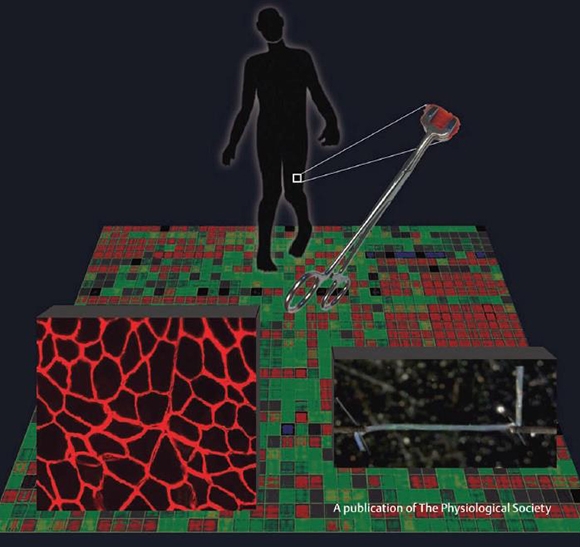You are here
Biological and Biomechanical Studies of Skeletal Muscle Contractures
Speakers
Abstract:
Skeletal muscle is a highly plastic tissue, responding both to level of use and presence of neural input. After stroke, spinal cord injury or cerebral palsy (CP) altered neural input can result in muscle contractures. We have studied the mechanics and biology of muscle from children with wrist flexion contractures secondary to CP. Dramatic architectural changes are observed in these children whereby sarcomere lengths are dramatically altered relative to patients without upper motor neuron lesions. This suggests dramatic alterations in the regulation of muscle growth in these children. Biomechanical studies of isolated single muscle cells reveal an increased passive modulus and decreased resting sarcomere length suggesting alterations in the cellular cytoskeleton. Similar studies on small bundles of muscle fiber reveal an increase in the compliance of the extracellular matrix and a proliferation of endomysial connective tissue. Thus, passive biomechanical properties of muscle from children with CP are dramatically altered in ways that are unparalleled by other altered use models. Gene expression profiling reveals a number of “conflicting” biological pathways in spastic muscle. Specifically, this muscle adapts by altering processes related to extracellular matrix production, fiber type determination, fiber hypertrophy and myogenesis. These transcriptional adaptations are not characteristic of muscle adaptations observed in Duchenne muscular dystrophy or limb immobilization. Superimposed upon the dramatic biological and structural adaptations is a loss in the number of satellite cells that are located throughout the muscle. Even the remaining satellite cells have epigenetic changes that can dramatically influence our ability to rehabilitate these muscles. Taken together, these results support the notion that, while spasticity is multifactorial and neural in origin, significant structural alterations in muscle also occur. An understanding of the specific changes that occur in the muscle and extracellular matrix may facilitate the development of new conservative or surgical therapies for this devastating problem.


